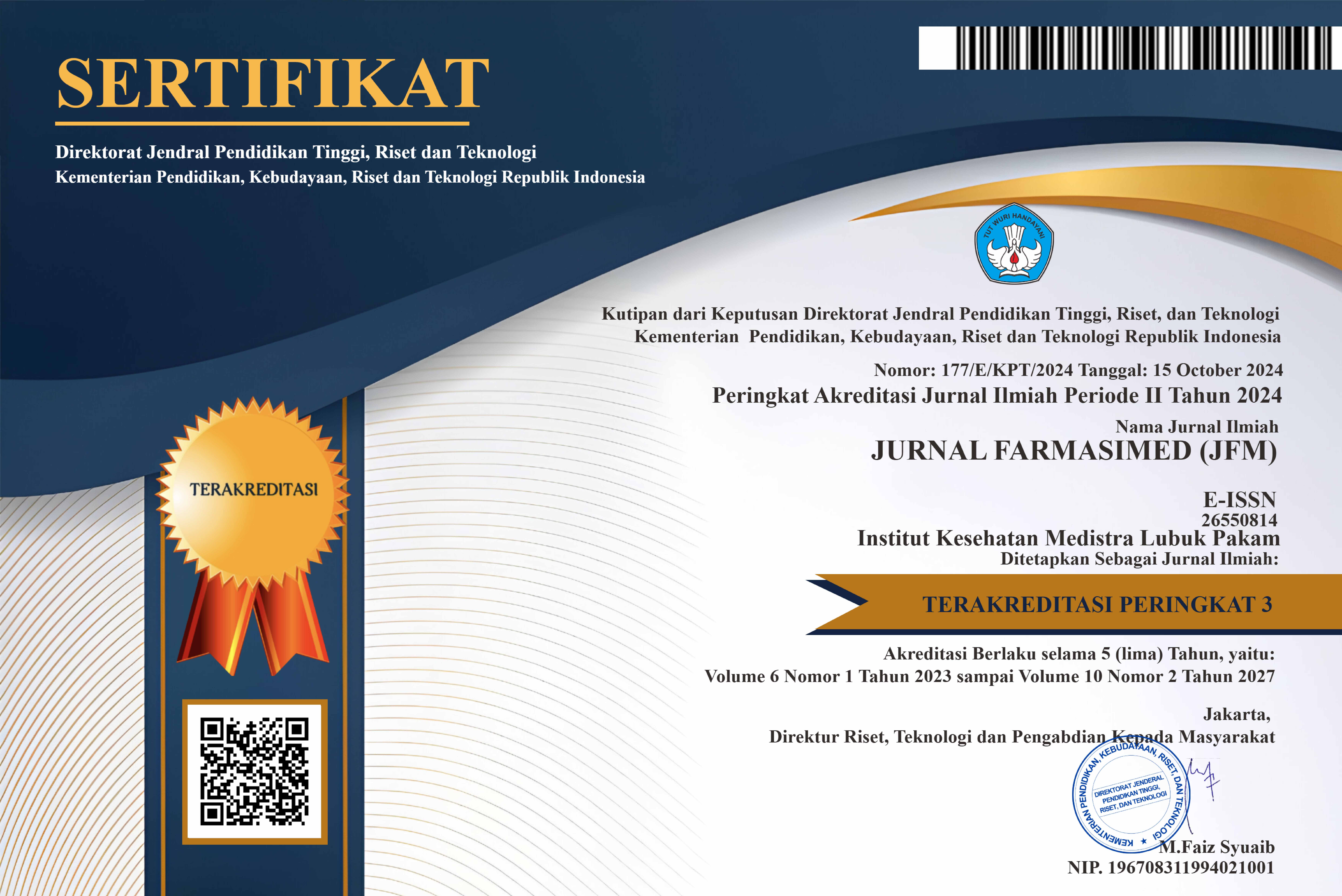PENETAPAN KADAR VITAMIN C PADA KULIT PISANG (Musa paradisiaca) DENGAN METODE SPEKTROFOTOMETRI UV-VISIBLE TAHUN 2018
DOI:
https://doi.org/10.35451/jfm.v2i2.363Keywords:
Vitamin C, Skin Banana, spectrofotometry UV-VisibleAbstract
Background: Vitamin C is a vitamin that is water soluble qnd one vitamin that are needed by the body. To meet the intake of vitamin C needed source of vitamin a derived from fruits, one of which is banana. Part of the banana , which is still rarely used is its skin. Banana peel is very beneficial for health however the situation is only considered as waste that has not been utilized well. This study aims to determine the levels of vitamin C on the skin of the banana (Musa paradisiaca) by the method of spectrofotometry uv-visible wavelength 224,5 nm. Method: This research use experimental with purely research stage comprise sample preparation, qualitative test, making the solution of the parent raw, quantitative test, determination of wavelength of maximum vitamin and creation of calibration surve. Result: Based on the research that has been done obtained the result of the qualitative test to prove the presence of high content of vitamin C contained in banana peels, with the highest level obtained in the skin of the plantain by 0,0253 mg/ml and the levels of the lowest on a banana peel the wax by 0,0172 ng/ml. Discussion: Levels of vitamin C on the skin of the banana barangan of 0, 0219 mg/ml, sample a banana skin banten by 0, 0173 mg/ml, sample a banana peel wax by 0, 0172 mg/ml and sample the skin of plantain by 0, 0253 mg/ml.
Downloads
Downloads
Published
Issue
Section
License
Copyright in each article is the property of the Author.

























